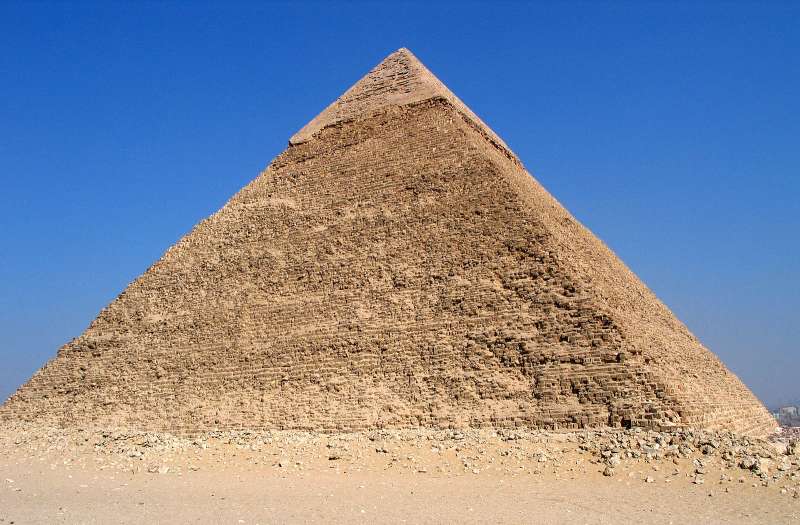Many Bible skeptics use Egyptian chronology as a “go to” method of discrediting Biblical historical accuracy. Specifically, they point to the lack of archaeological evidence for Biblical events that, if true, should be apparent in Egypt. For example, a common claim is that there is no evidence that a large number of Semitic people were slaves in Egypt, or that the mass exodus or Joshua’s conquest occurred. Skeptics accept this as ample proof that the Bible cannot be accurate. However, as we’ll see, assuming the reliability of the traditional Egyptian chronology is a big mistake. In addition, archaeological evidence (by nature) is open to interpretation. Evidence corroborating Biblical events can be difficult to pinpoint due to the fact that there is debate regarding the correct time periods to be searching in as well as even the specific geographical areas to investigate. For example, Bible scholars debate both the date and the route of the Exodus, as well as the locations of Mt. Sinai and Kadesh Barnea among others. Despite these difficulties, we do find archaeological evidence to corroborate the Biblical narrative of the ancient Israelites.
Where Does Traditional Egyptian Chronology Come From?
First of all, this chronology was developed before we had the capability to translate hieroglyphics. Jean-Francois Champollion was the first person to translate hieroglyphics in 1822. Prior to this, Egyptian chronology was pieced together based on the writings of classical authors like Herodotus and Siculus. Modern advances have shown most of these writings to be woefully inaccurate.

Another source for the traditional Egyptian chronology was the Aegyptiaca, written by Manetho- an Egyptian priest in the third century BC. The Greek king of Egypt, Ptolemy II, commissioned Manetho to compile a history of Egypt. The problem is, Manetho’s history was never intended to be a chronological account of Egyptian history. Charles Kimball points out in his book, A Biblical Interpretation of World History, “Manetho’s main goal was to prove to the Greeks that the Egyptians were the world’s oldest people…” Kimball goes on to explain that Manetho was in fact competing with two men endeavoring to make the same claim for their nations: Berosus for Mesopotamia and Erastosthenes for the Greeks.
Manetho organized Egyptian history into the thirty dynasties that are recognized today. But there are big problems. First of all, Manetho’s original text is gone. All we have are various quotes of his work from the Roman writers Eusebius and Africanus, and an excerpt from his writings from Josephus. These two versions don’t even agree on names or how years are counted. Here’s an example from Kimball’s book, “Syncellus, who copied Africanus’ list wrote, ‘The twenty fourth dynasty, Bocchoris of Sais, for six years: in his reign a lamb spoke [a short gap in the manuscript] 990 years.’ Meanwhile Eusibius wrote, “Bocchoris of Sais for 44 years : in his reign a lamb spoke. Total 44 years.’ We are left guessing whether the XXIV dynasty lasted for 6 years, 44 years, or 990.”
Kimball also points out that the names and ages that Manetho gave for the 18th and 19th dynasties have been proven wrong at almost every comparison by evidence left by the pharaohs themselves. James H. Breasted, author of History of Egypt, says that Manetho’s history is “a late, careless and uncritical compilation, which can be proven wrong from the contemporary monuments in the vast majority of cases, where such documents have survived.”
I mentioned earlier than Manetho measured time differently- he used “regnal years” like all the other ancients did. For example, “in the 5th year of King So and So.” If you add all these reigns consecutively you end up with quite an inflated time line due to the addition of a multitude of nonexistent generations. Which, if you’ll recall, goes right along with the purpose for which he was commissioned- to prove that the Egyptians were the world’s oldest people. In reality, each dynasty was not successive. Some kings shared the throne as co-regents and many dynasties more than likely overlapped. Kimball quotes Sir Alan Gardiner, “what is proudly advertised as Egyptian history is merely a collection of rags and tatters.”
This leads us to another issue with traditional Egyptian chronology. Historians had to come up with a way to align Egyptian regnal years with modern BC dates. So, in 1904 Eduard Meyer came up with a theory called the “Sothic cycle” to reconcile the dates. Traditional Egyptian chronology is based on this theory.
What is the Sothic cycle theory?
Dr. Elizabeth Mitchell writing for Answers in Genesis explains, “Meyer proposed that the Egyptian calendar, having no leap year, fell steadily behind until it corrected itself during the year of the ‘rising of Sothis’ [Sothis is a star we call Sirius]. The theory says that the Egyptians knew that 1,460 years were necessary for the calendar to correct itself because the annual sunrise appearance of the star Sirius corresponded to the first day of Egypt’s flood season only once every 1,460 years (like a broken watch that is correct twice a day) and that the Egyptians dated important events from this Great Sothic Year.”

This would be great if there were actually any evidence that the Egyptians actually reckoned time this way- but there isn’t. To add insult to injury, the two non-Egyptian writers who espoused this concept (a Roman named Censorinus and Theon of Alexandria) don’t agree on the starting point of the Sothic year. As it turns out this so called Sothic year is impossible to pinpoint due to this fact that Dr. Mitchell mentions, “…whenever Egyptian writings mention the rising of Sothis in connection with a regnal year, the pharaoh is unnamed, or the reference is ambiguous.”
Does Egyptian Chronology Hold Up to Scrutiny?
The Hebrew chronology in the Bible isn’t the only source that Egyptian chronology is inconsistent with. It’s disagrees with the Assyrian chronology, the history of the Hittite people as they coincide with Assyrian history, carbon dating, and even with itself according to Egyptian records that historians now have the capability to decipher.
In part two of this series, we’ll discuss the archaeological evidence that DOES corroborate the Bible.







“Oh what a tangled web we weave when first we practice to deceive.” It’s amazing the lengths people will go to avoid having to acknowledge the truth of the Bible and thus their responsibility to a creator.
I completely agree Duane!